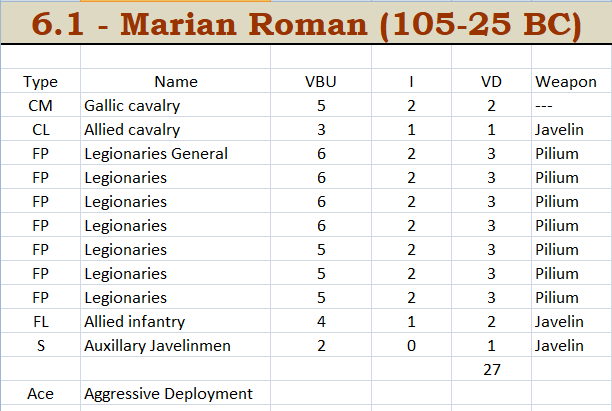Crassus, the Parthians, and the disastrous battle of Carrhae, 53 BC
Richard lent me this book having seen my progress with things Roman. Excellent historical read. A bit repetitive at times, but this is from its attempt to give both sides of the battle and events leading up to and afterwards. Enjoyable read and also informative as to sources and more importantly lack thereof.
My biggest problem was/is how to pronounce Carrhae. A YouTube entry gives it as sounding like Carrie (as in Fisher). How to pronounce gives it as Car hey. I find this rather funny as it supports in an oblique manner, the problem the author identified with contradictions provided by conflicting sources.
Can this battle be recreated using Basic Impetus?
Here is my attempt to come up with a scenario
The table is bereft of terrain. The Roman deploys all of his forces first, then the Parthian. Clearly they have been out scouted and also Surenas, the Parthian general, kept the Cataphracts hidden. An historical deployment would be a box formation (i.e. a square with the cavalry and allied troops in side), but the Roman is free to try a linear deployment if they wish (should they do so, the Parthian player is not restricted from deploying within 4H of the side edges). The use of aggressive deployment represents Crassus' desire to get into combat.
The aim is for the Romans to cross the table (at least half the force touching the Parthian table edge) and then to return and exit off their starting table edge.
The aim for the Parthians is to break the Roman army's morale. If the Romans break the Parthian army's morale they win (and the crossing the table aim is rendered obsolete).
Option: Parthian units that evade off the table can return in a subsequent turn, provided the evade was from a charge declared by a Roman FP. The point of return can be anywhere on the table edge they exited from. Alternatively, note exit point and measure from there, full move distances (i.e. 4H+2H) allowing the distance to accumulate based on time held off table.



It's certainly worth trying this Sun of York. Of course, the constraint of a table length is artificial, and in reality, the tables went on forever. But we need to see if it can be done with Basic Impetus.
ReplyDeleteMy thinking is that the Romans reach the edge of the table in search of the Parthian camp. It's not there so they have to go back to their camp (table edge). It kind of fits in with my reading of the battle which was an advance followed by a retreat.
DeleteTable edges cause problems as one by one the Parthians will fail their evades and be contacted or end up off the board. I think the Romans are strong enough to avoid casualties before this happens. an option would be for the cataphracts to set up to charge the Romans on a flank as they advance and then roll up the flank.
ReplyDeleteYes that is a definite risk. Could make the table bigger. I would use the option to return off-table evading Pathian cavalry if the evade was caused by Roman FP. I also think that the Parthian horse archers could be upgraded to VBU 4 representing supply of arrows and also that they seemed to be particulalry effective. Hopefully will test this out in the next few weeks.
Delete